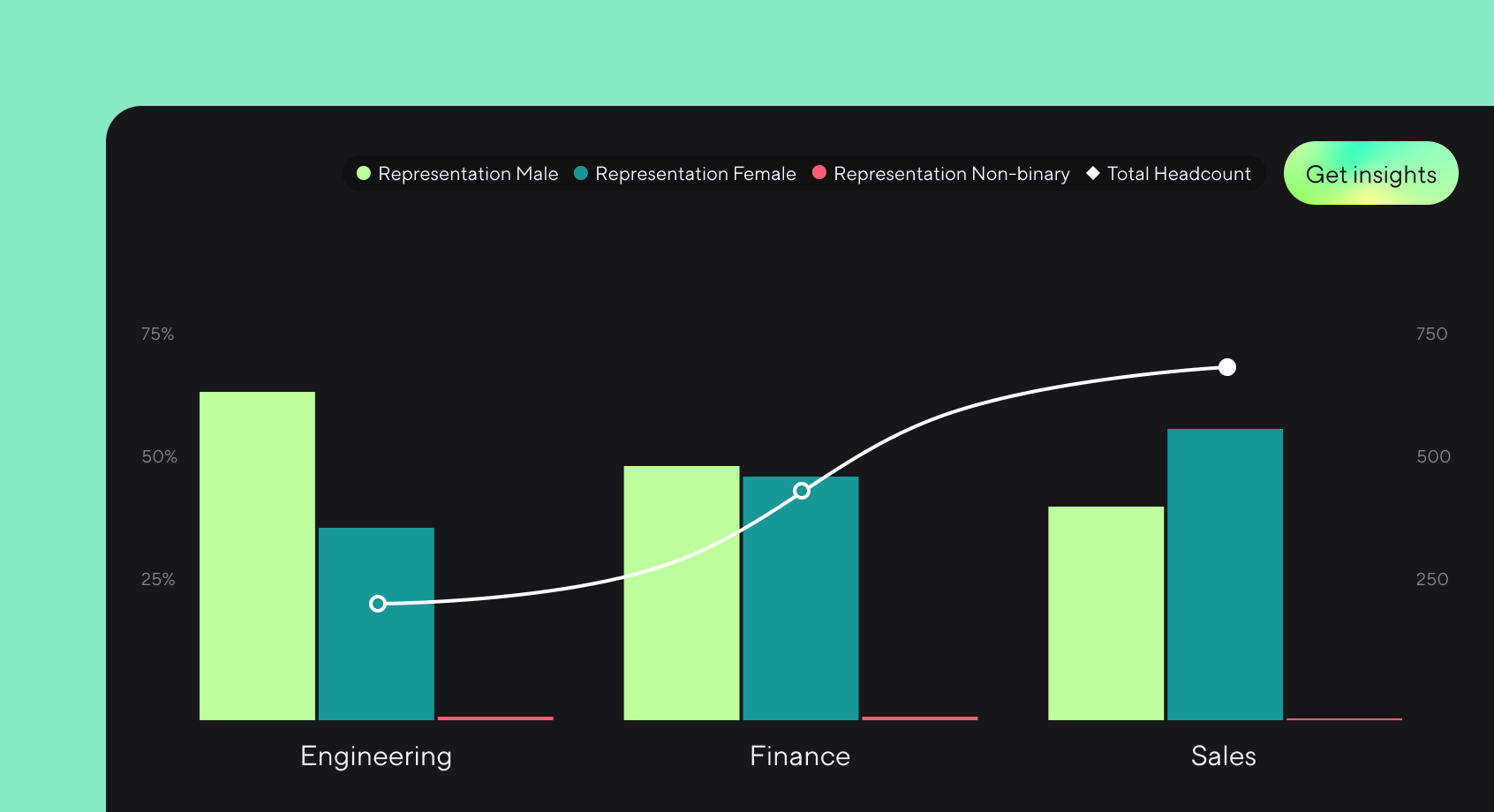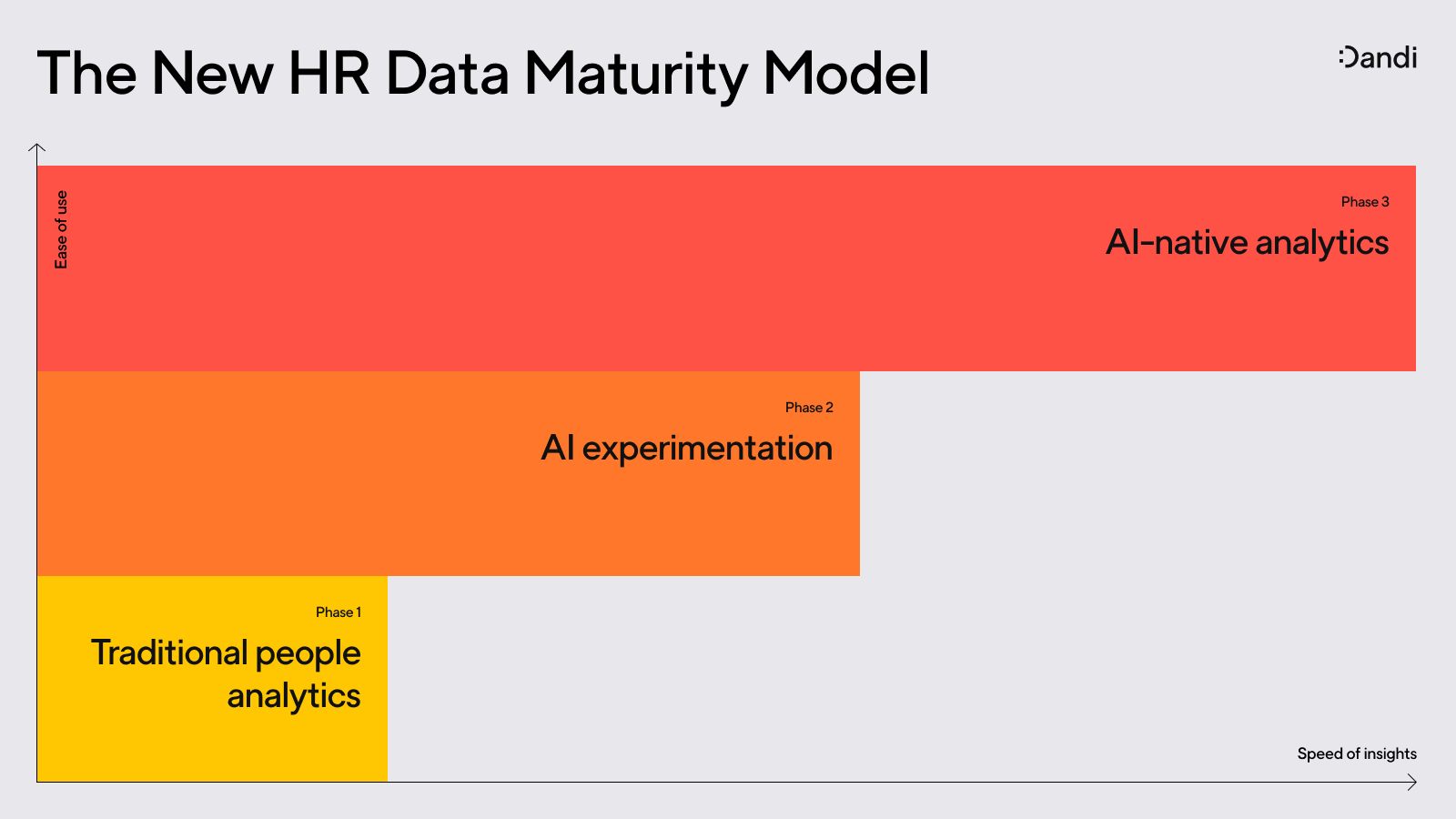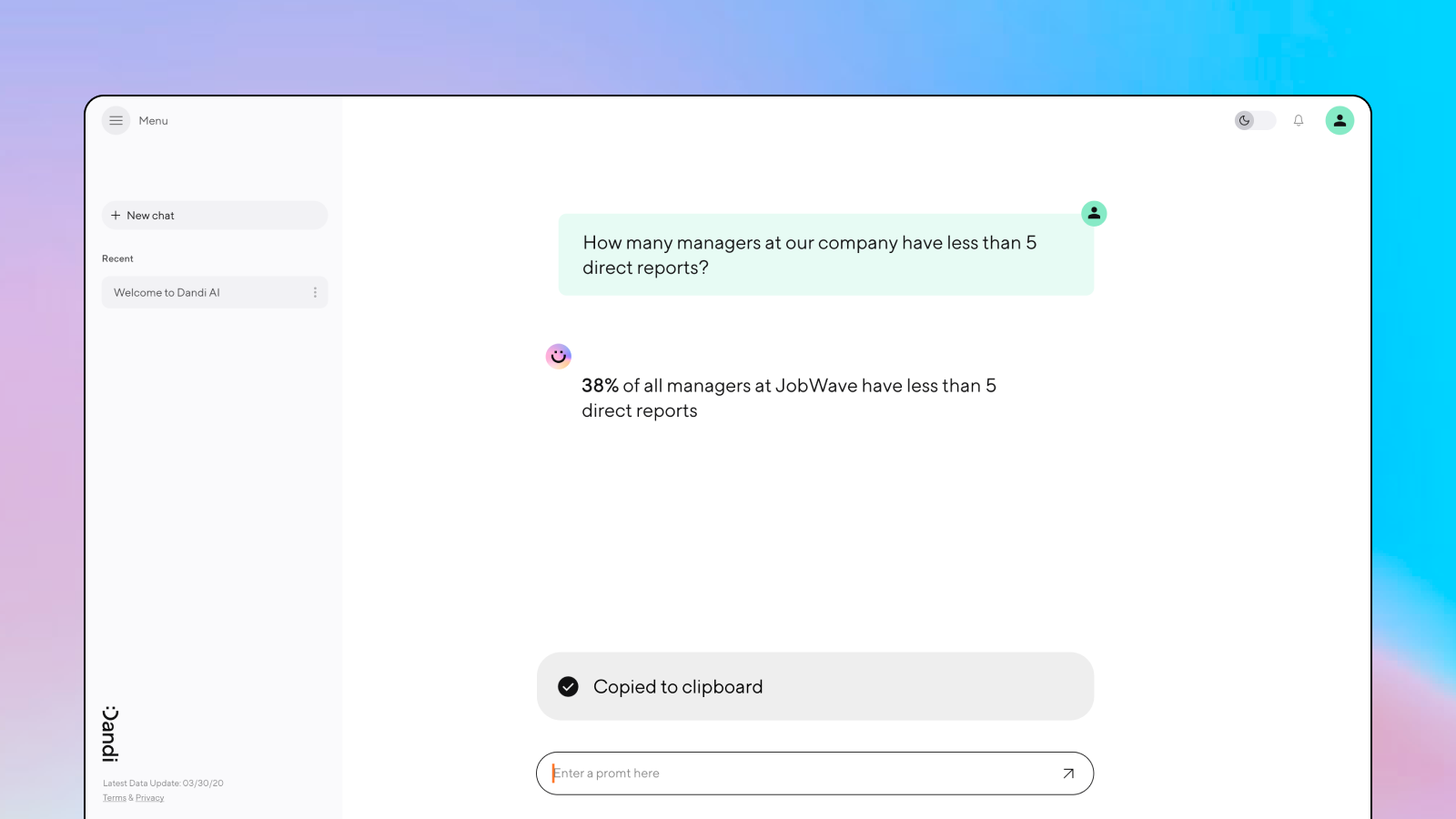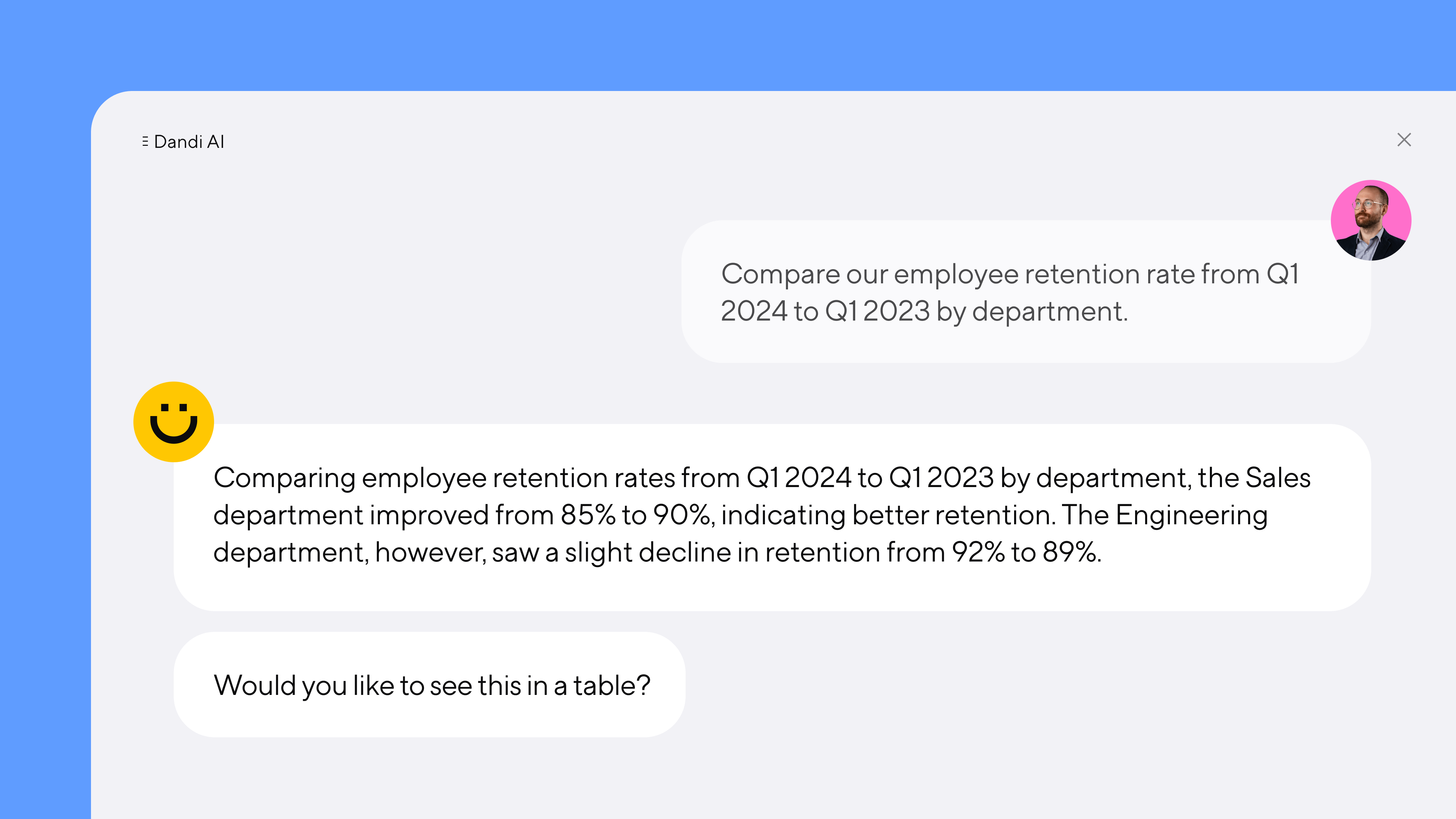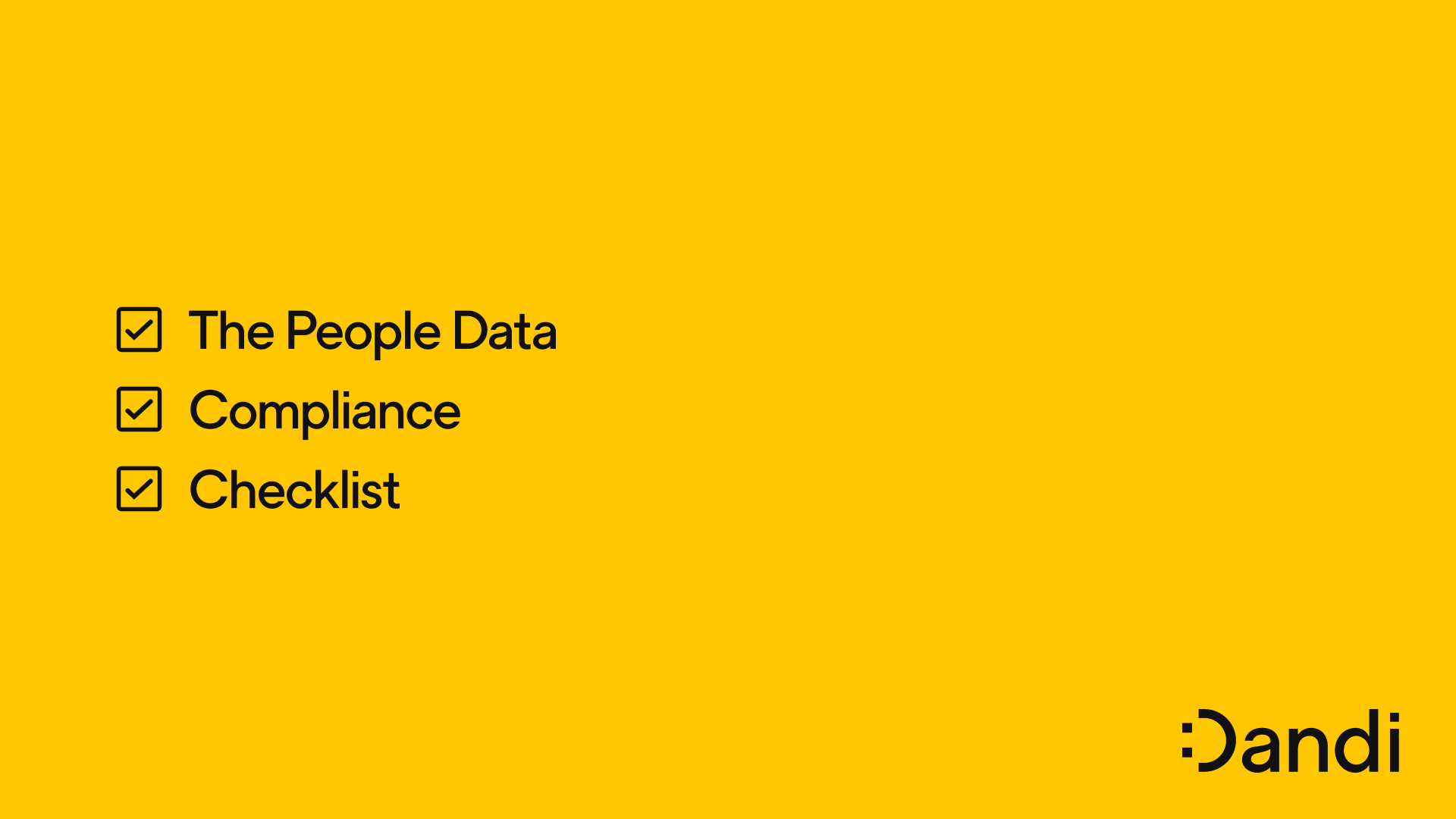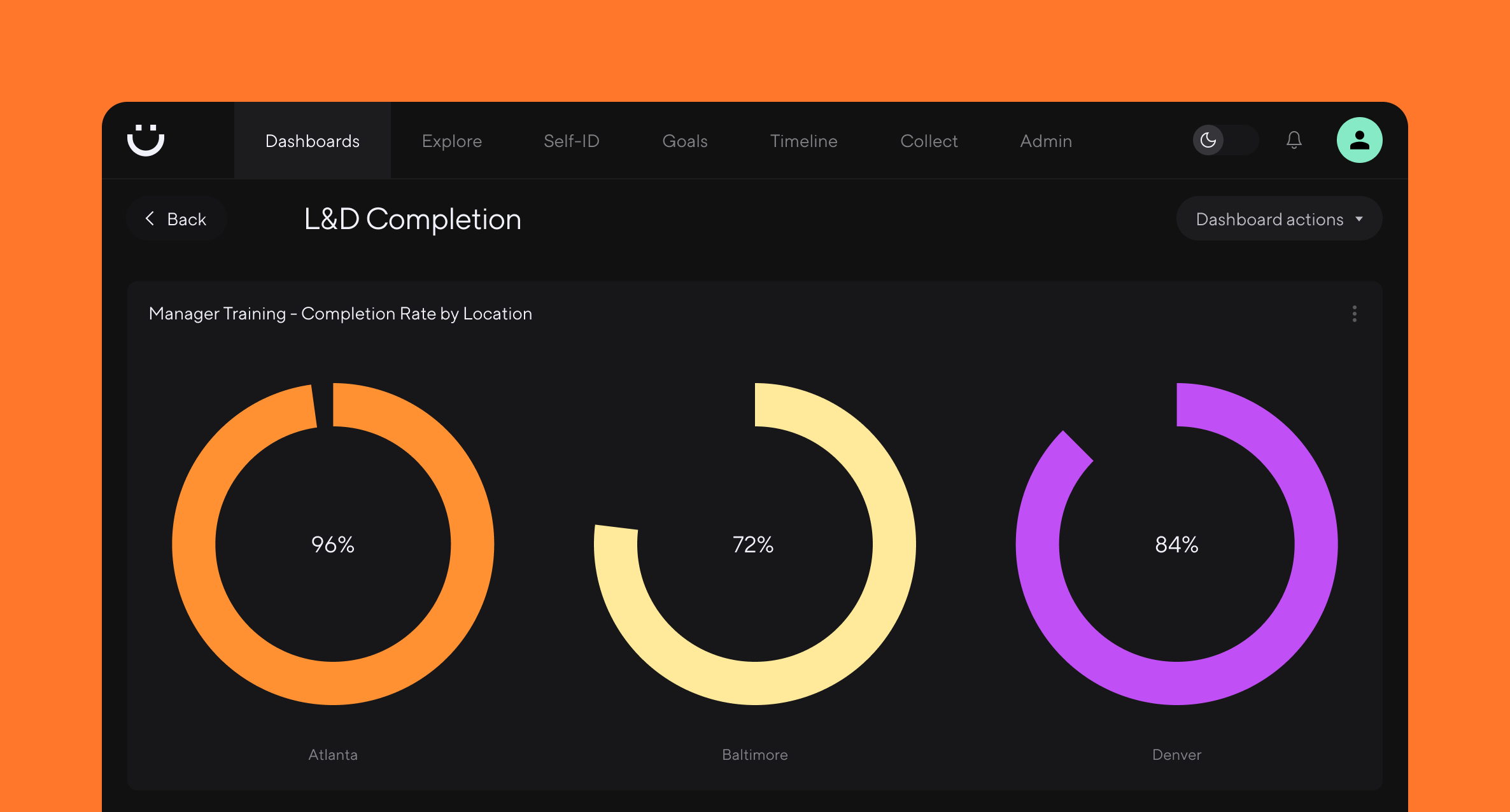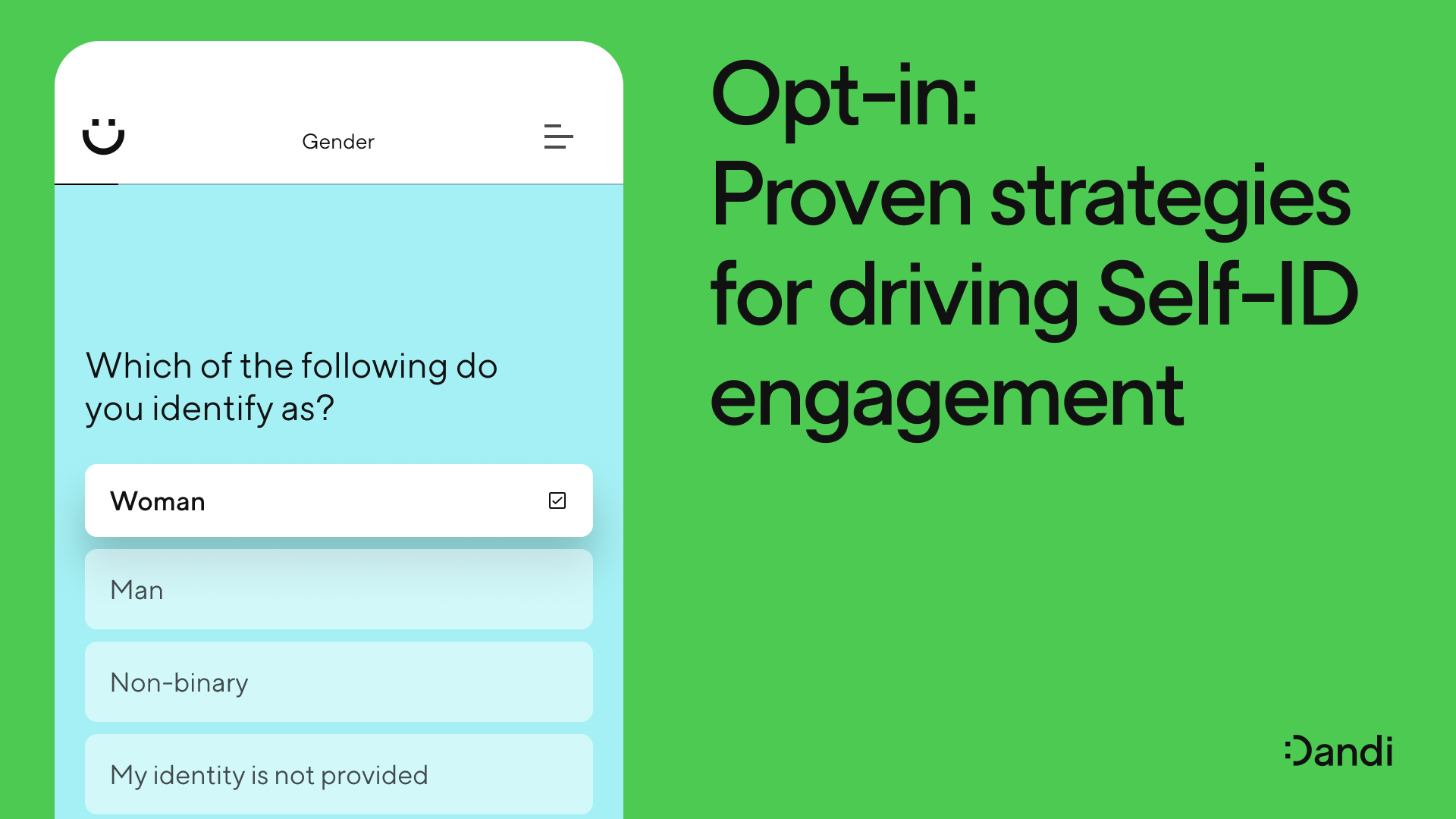4 ways to use intersectional measurement

Camille Hogg, PhD – Apr 19th, 2023
Intersectional measurement is key to understanding employee experiences. This article looks at how organizations can use intersectional measurement to drive more successful DEI programs.
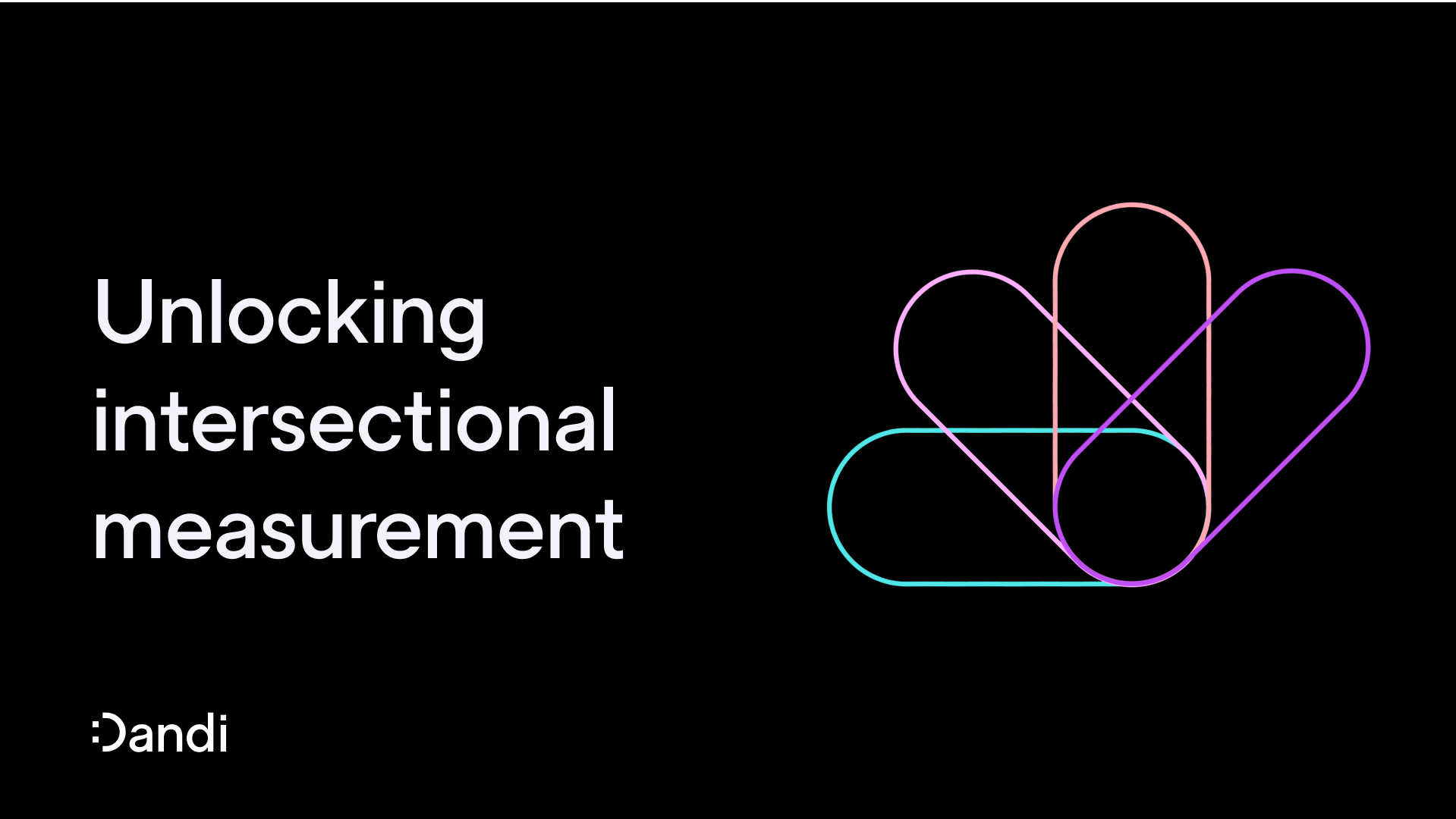
Intersectionality can shape experiences across most of human life. In the workplace, it plays a huge role in an employee’s career trajectory.
Humans have always depended on forming tribes. We have this tendency of fitting ourselves—and others—into neatly-labeled boxes that most closely fit with our perception of what constitutes identity, whether that relates to our gender identity, ethnicity, race, or favorite sports team.
Up until recently, we were doing the same with our DEI efforts, too.
Organizations have historically analyzed their DEI data by one or two facets of their employees’ identity. But the problem with that is that humans are kaleidoscopic. We typically don’t fit into one category or box. And when you make decisions based on this unilateral perspective, it limits your ability to make real progress on DEI.
Intersectional measurement is the core of understanding these experiences, and building a data-driven DEI program. Here’s why.
What is intersectionality?
Coined by professor Kimberlé Crenshaw, intersectionality refers to the ways that different identities can overlap and compound how an individual experiences bias, discrimination, and oppression.
Identity can mean a lot of different things, and often refers to primary dimensions of diversity like race, ethnicity, gender, sexuality, and physical disability. But it can also include secondary characteristics, such as socioeconomic status, primary language, geographic location, and educational background.
And because individuals can identify with multiple dimensions of diversity—for example, being both physically disabled, female, and neurodivergent—all of these traits together have a profound impact on how they experience the world. Instead of analyzing an individual’s experience of being disabled, female and neurodivergent separately, intersectionality focuses on the experience of identifying with all of those identity groups simultaneously.
Intersectionality refers to the ways that different identities can overlap and compound how an individual experiences bias, discrimination, and oppression.
What is intersectional measurement?
Intersectionality can shape experiences across pretty much every single vector for human life, including health, schooling, and justice outcomes. In the workplace, it plays a huge role in an employee’s career trajectory:
-
A 2018 study found that women on the autism spectrum expressed difficulty in searching for jobs due to embedded gender norms around family expectations and the type of role they felt they should aspire to.
-
A 2022 joint report by LeanIn and McKinsey found that Latina and Black women are less likely to receive support for their career development
-
A 2021 study found that employees with physical disabilities are more likely to be passed over for promotion or fired. This inequity was especially prevalent among men and older employees.
-
Another 2021 study found that Black men with no college education earn about half the salary of White men
When organizations analyze their employee lifecycle using intersectional measurement, it helps them understand how overlapping identities can create inequity and bias across a number of core processes, including talent acquisition, performance management, growth, and compensation.
To harness the power of intersectional analysis, organizations must move beyond traditional ways of collecting and analyzing their DEI data, and integrate it with data that spans their entire employee lifecycle. This is complex to do at scale, because DEI has historically sat on the sidelines of the business, meaning businesses haven’t had access to the right tooling.
But when organizations do have the right tooling in place (hint: that’s Dandi — book your demo here!) that connects their data across core business and HR processes, they’re better able to measure and solve their biggest causes of unintentional bias.
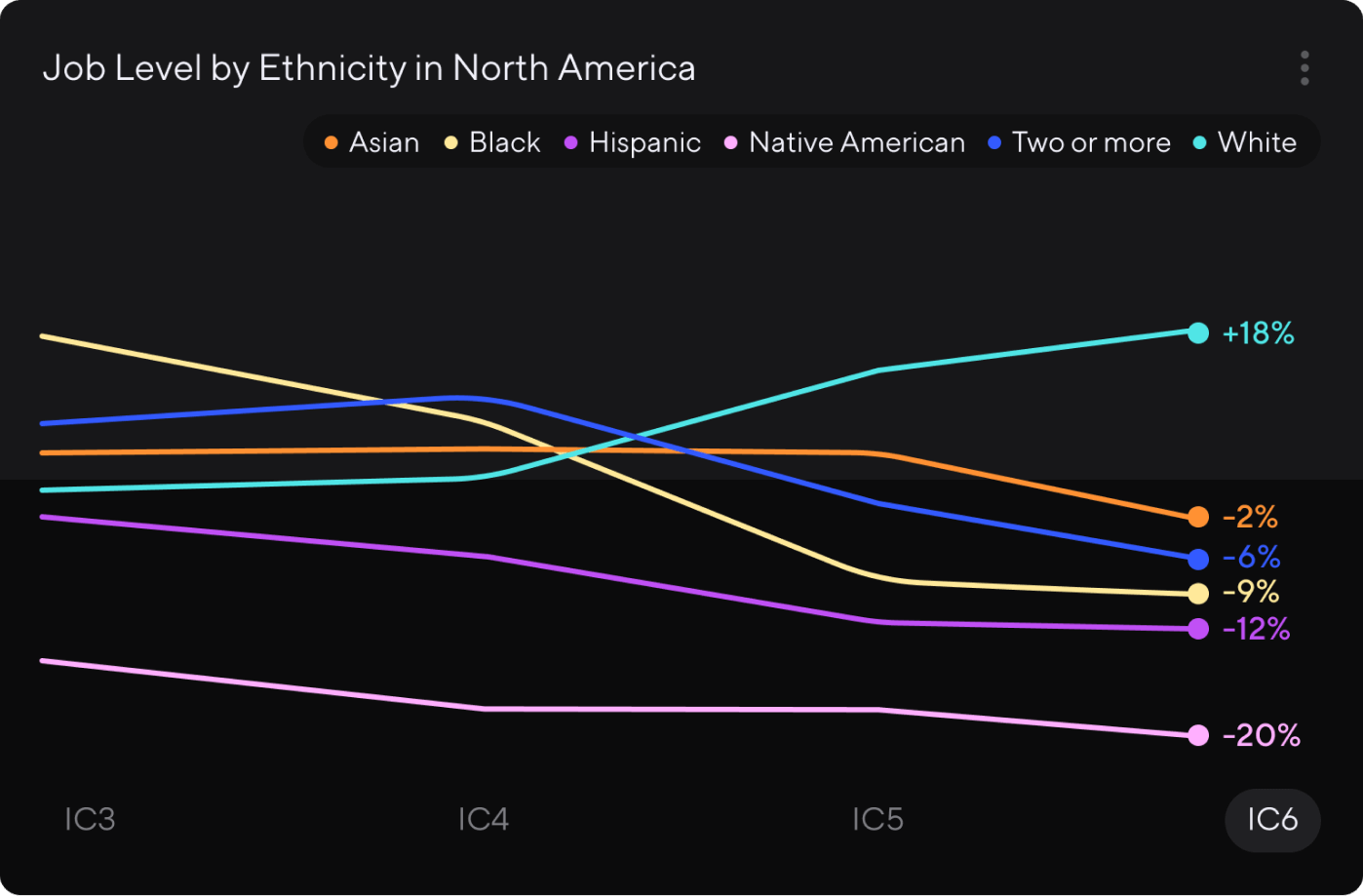
4 key benefits of implementing intersectional measurement
Viewing your DEI data through an intersectional lens gives your organization a detailed set of directions that tells you exactly where you need to make changes that drive your organization forward—and why these matter.
And when you’re using intersectional measurement to its full potential, it opens your organization up to four key benefits.
1. Transform clues into hard evidence
Without intersectional measurement, organizations are making decisions on their DEI strategy without understanding their impact. It’s sort of like leaving for a long road trip with only a vague destination in mind—you’re driving without a map or set of directions that tell you which roads to take, or where to turn.
This means that when they do find evidence of bias in their processes, it’s much harder to get to a why, let alone know how to act.
“When I used to track our DEI metrics in a spreadsheet, the level of effort that went into maintaining it meant that I couldn’t always keep digging to find out why we were seeing what we were seeing,” said Sara Axelbaum in our recent ebook The essential data-driven guide to DEI transformation.
“That stopped at surface level. I’d uncover inequities in our data, but I couldn’t identify where they were happening, when they happened, or for which group of people. Those trends we saw were clues—but they weren’t substantiated evidence that led us to a root cause nor had actionable outcomes.”
Intersectional measurement enables organizations to get below the surface of their DEI data, identify their biggest challenges, and monitor trends and patterns over time. This means that instead of implementing near-term solutions, like increasing employee salaries to fix a pay gap, they’re able to find the root cause of the issue, and focus on fixing processes and policies rather than symptoms.
2. Measure and scaffold DEI goals and progress
There’s an old computer science maxim of "garbage in, garbage out." Starting with a flawed or incomplete view of your data means you’re only ever going to get a flawed result. And that can have a huge impact on the types of goals you set, and actions you take.
To eliminate a representation issue, for example, a logical goal or action might be to proactively source candidates from groups where you see representation gaps. But ultimately, this won’t target the causes of systemic and structural bias still at large in your organization. It won’t help identify which employee populations are most likely to leave and why—nor will it identify the processes, business units, or locations where representation gaps are most likely to happen.
And when representation doesn’t improve year-over-year, this makes it much harder to measure the impact of your actions or the overall success of your DEI strategy.
Over time, a lack of visible progress causes even the most well-intentioned of organizations to stall on their DEI goals—but it also means that you’re not able to see the smaller actions you’ve taken that have made an impact, and replicate those.
And as DEI strategist Lily Zheng puts it, progress on DEI is less about “doing the work, but doing work that works.” Intersectional measurement means you can set smaller, more targeted goals that scaffold visible progress, iterate and adjust as necessary, and work towards continuous, measurable improvement.
3. Understand how identity shapes your employee experience
For most organizations, collecting data about their employee experience is vital to understanding how employees feel at work. But often, they stop at the big numbers. Employee engagement is often viewed as a five-point scale. Performance management is often a pass or "needs improvement." Compensation is either above benchmark, or below.
Having a birds-eye view of your employee experience means you can see which way the wind blows—but you can’t see how different employee groups experience their day-to-day roles on the ground.
When you’re unable to see how overlapping identities contribute to your employees’ individual experiences of your organization, it means you’re more likely to act based on assumptions. And acting on assumptions means you’re less likely to identify what different employee populations actually need to feel fulfilled in their roles, motivated to do their best, and like they belong at your organization.
Collecting quantitative and qualitative data about your employee experience and analyzing it through an intersectional lens enables you to see the shades of gray between different employee experiences, and work towards creating an environment where everyone feels valued.
4. Eliminate bias, rather than perpetuate it
Inclusion begets diversity. But when organizations don’t understand how intersectionality shapes their employee experiences, it’s likely to impact their employees’ sense of inclusion and belonging.
This can have a direct impact on how your employees show up to work, and their likelihood of actively participating in shaping your organization’s culture. We know from research that when people feel excluded, either intentionally or unintentionally, it can impact how we act and behave.
When individuals consistently feel misunderstood by their organization, it harms their sense of belonging, meaning they’re less likely to speak up or share their perspectives. Over time, this may lead to bias becoming more entrenched—even when organizations are acting in their best efforts to eliminate it.
Intersectional measurement, instantly
“The concept that people can be defined by one factor—gender or race—makes assumptions on who we are,” said Rod McLeod, VP of Social Impact at Braze, in our new ebook. “The intersectional approach to measurement makes the most sense.”
Intersectional measurement helps organizations dig below the surface of their DEI data, unearthing the root causes of bias, and enabling them to understand the day-to-day experiences of their workforce on a much deeper level.
And when it comes down to it, intersectional measurement doesn’t just make sense from a DEI perspective, it makes sense from a business one, too. Intersectional measurement enables organizations to draw a direct, data-driven line between their key business challenges and their DEI efforts.
In the past, getting this right wasn’t easy—but now insights are available in an instant, thanks to Dandi.
Dandi’s sophisticated intersectional measurement functionality means organizations can power intersectional analysis at scale, and unlock the insights needed to move DEI forward.
Integrating data from across the entire employee lifecycle, Dandi enables organizations to measure and track trends across race, sexual orientation, age, office location, job level, and more to identify the patterns and hotspots that could be harming their progress on DEI.
More from the blog
Announcing more powerful Dandi data visualizations
Team Dandi - Oct 23rd, 2024
The New Maturity Model for HR Data
Catherine Tansey - Sep 5th, 2024
Buyer’s Guide: AI for HR Data
Catherine Tansey - Jul 24th, 2024
Powerful people insights, 3X faster
Team Dandi - Jun 18th, 2024
Dandi Insights: In-Person vs. Remote
Catherine Tansey - Jun 10th, 2024
Introducing Dandi AI for HR Data
Team Dandi - May 22nd, 2024
5 essential talent and development dashboards
Catherine Tansey - May 1st, 2024
The people data compliance checklist
Catherine Tansey - Apr 17th, 2024
5 essential EX dashboards
Catherine Tansey - Apr 10th, 2024
Proven strategies for boosting engagement in self-ID campaigns
Catherine Tansey - Mar 27th, 2024
